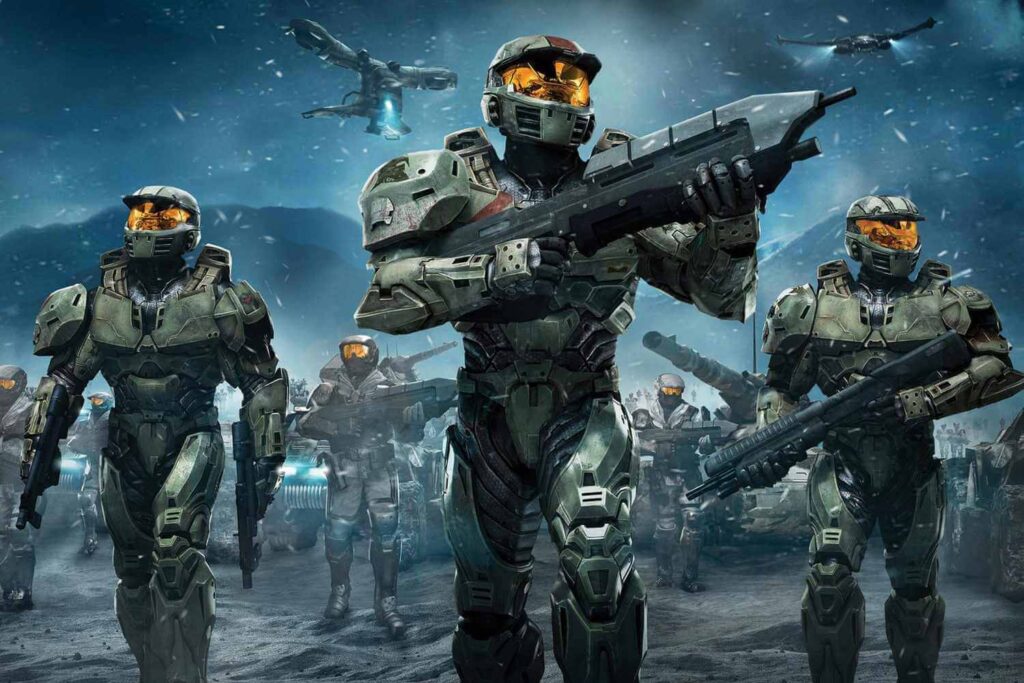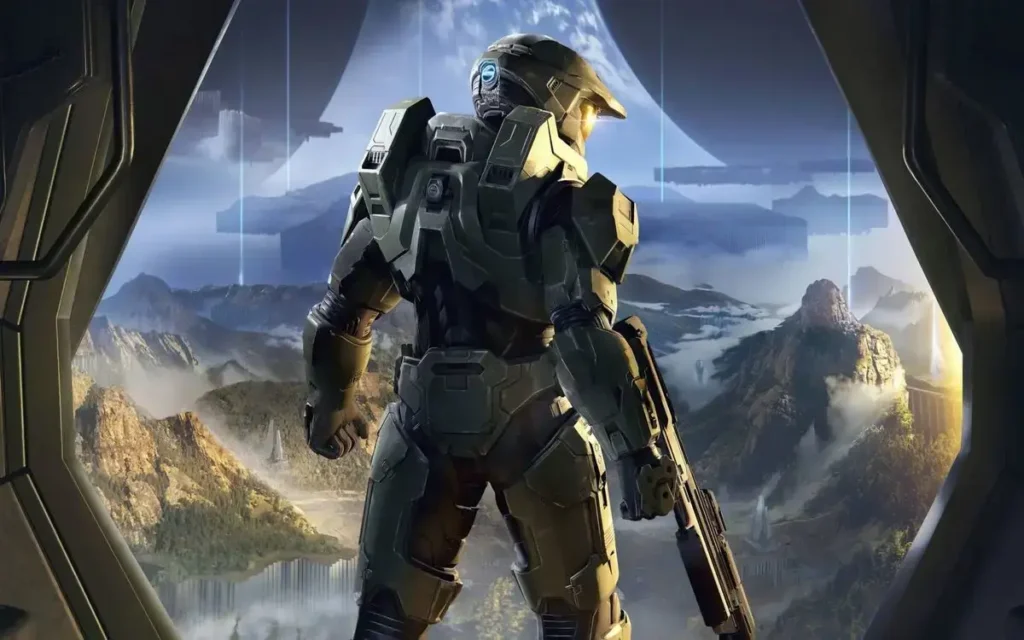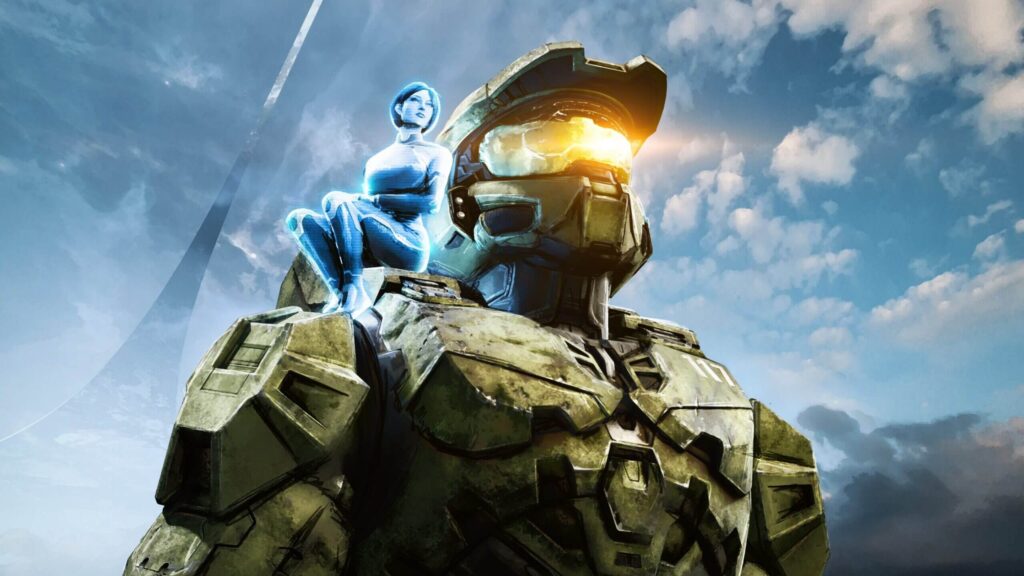The early 2000s were a golden era for gaming, with iconic titles that left an indelible mark on pop culture. Among these, Halo: Combat Evolved, often referred to as Halo (2003) for its continued popularity and updates in that time frame, stands tall as a revolutionary first-person shooter that redefined console gaming. But beyond its gameplay, what has truly endured is its visual representation—specifically the Halo (2003) game icons banners, which encapsulated its artistic essence and became symbols of gaming nostalgia.
In this article, we delve into the artistry behind the Halo (2003) game icons banners, their impact on gaming culture, and how they have come to represent the golden age of Xbox gaming. We’ll also explore a curated list of these iconic works and their historical significance in gaming aesthetics. Plus, stay tuned for tips on where to find updates on this classic artwork and how to incorporate it into modern gaming setups.
The Legacy of Halo: Combat Evolved (2003)
When Halo: Combat Evolved launched in November 2001, it was hailed as a groundbreaking title for Microsoft’s first gaming console, the Xbox. However, by 2003, as the game’s popularity grew and its legacy solidified, it became a central figure in fan communities. Halo (2003) was celebrated not just for its gameplay mechanics and epic storyline but also for its rich visual identity.
The game icons and banners associated with this title were more than just promotional materials. They became synonymous with the game’s universe, resonating deeply with fans and cementing their place in the annals of gaming history.
What Are Game Icons and Banners?
In the gaming world, game icons are the visual representations, often small, symbolic images used in menus, profiles, or promotional materials. They can be as simple as the Master Chief’s helmet or as intricate as the Forerunner symbols featured in the Halo lore. Banners, on the other hand, are wider and often more detailed artworks used for advertisements, event promotions, or fan displays. Together, they create a cohesive visual identity for a game.
For Halo (2003), these elements were meticulously crafted to capture the game’s atmosphere, storyline, and iconic characters. They were designed to appeal to a wide audience while staying true to the futuristic and militaristic themes of the game.

The Art Behind Halo (2003) Game Icons Banners
Iconic Visual Elements
The artwork for Halo (2003) game icons banners often featured:
- Master Chief: The central figure in the franchise, his MJOLNIR armor became an instantly recognizable symbol.
- The Halo Ring: A stunning representation of the game’s setting, the Halo ring was depicted in many banners, symbolizing mystery and grandeur.
- Vehicles and Weapons: The Warthog, Banshee, and the Assault Rifle were frequently highlighted in promotional materials.
- Forerunner Design Aesthetic: The intricate, alien architecture and symbols from the Forerunners added depth to the game’s lore and were often incorporated into banners.
- Team and Combat Scenes: Multiplayer gameplay was a significant aspect of Halo’s appeal, and banners often depicted teams of Spartans in action-packed sequences.
Techniques and Tools
During the early 2000s, digital art tools like Adobe Photoshop and Illustrator were extensively used to create high-quality banners and icons. These tools enabled artists to blend realism with the futuristic aesthetic that Halo demanded. Key techniques included:
- High-Resolution 3D Renders: The characters and settings were often rendered in 3D before being polished in 2D formats.
- Dynamic Lighting: To emphasize the sci-fi themes, dramatic lighting with lens flares and shadows was used.
- Vivid Colors: The contrast between the dark space backdrops and the glowing elements like energy shields made the visuals pop.

A List of Iconic Halo (2003) Game Icons Banners
- The Master Chief Portrait
This minimalist icon showcased the Spartan helmet with reflective visors, capturing the stoic heroism of the protagonist. - The Halo Ring Horizon
A wide banner featuring the iconic ring-shaped world against a backdrop of stars and planetary bodies. This image became one of the most widely used visuals. - Red vs. Blue
Highlighting the multiplayer aspect, this banner depicted two teams in a dramatic standoff, emphasizing strategy and camaraderie. - Warthog in Action
The rugged, all-terrain Warthog vehicle was depicted in motion, a fan-favorite piece among multiplayer enthusiasts. - Cortana’s Holographic Glow
The AI companion Cortana, with her glowing blue figure, became a central theme in several promotional materials. - The Flood Invasion
A darker banner featuring the parasitic alien species, The Flood, set against a haunting backdrop of destruction. - Forerunner Architecture
This artwork highlighted the mysterious structures and glyphs, catering to fans intrigued by Halo’s deep lore. - Epic Team Battle
Spartans and Covenant forces clashing in a battlefield, with plasma bolts and grenades flying, symbolizing the chaotic beauty of Halo’s combat.
Why Fans Treasure Halo (2003) Game Icons Banners
The Halo (2003) game icons banners hold a special place in the hearts of fans for several reasons:
- Nostalgia: For many, these visuals are a gateway to fond memories of LAN parties, late-night gaming sessions, and camaraderie.
- Artistic Excellence: The attention to detail and creativity in these artworks reflect the passion of the creators.
- Cultural Impact: These visuals have transcended gaming, influencing merchandise, fan art, and even esports branding.
- Collectibility: Original banners and icons from 2003 are considered collectibles, with some fans going to great lengths to obtain them.

Finding Halo (2003) Game Icons Banners Today
With the rise of retro gaming and nostalgia-driven content, there are numerous avenues to explore if you’re looking to find or learn more about Halo (2003) game icons banners:
- Official Halo Channels
Keep an eye on Halo’s official website and social media pages for announcements about retro art collections and digital downloads. - Fan Websites
Communities like Halo Waypoint and fan forums often feature extensive galleries of classic icons and banners. - Art Platforms
Websites like DeviantArt and Pinterest house countless fan-made and official Halo-inspired artworks. - Collector’s Markets
eBay and similar platforms occasionally list rare physical banners and promotional materials from the early 2000s. - Gaming Conventions
Retro gaming events often showcase vintage promotional materials, offering a chance to see these banners up close.
How to Use These Icons and Banners Today
Modern technology allows fans to repurpose Halo (2003) game icons banners in creative ways:
- Desktop and Mobile Wallpapers: Relive the nostalgia by setting these artworks as your background.
- Custom Gaming Setups: Print banners to adorn your gaming room or include them in custom skins for consoles.
- Social Media Themes: Use the icons for profile pictures or banners for headers to showcase your love for the game.
- Fan Projects: Incorporate these visuals into fan art, cosplay, or content creation to celebrate Halo’s legacy.
Staying Updated on Halo (2003) Artworks
To stay in the loop about news and updates on Halo-related artworks, consider signing up for newsletters from official Halo platforms or following fan pages. Many sources provide access to digital archives, downloadable assets, and even competitions centered around classic Halo designs.
Final Thoughts
The Halo (2003) game icons banners are not just relics of a bygone era but enduring symbols of what made gaming in the early 2000s so memorable. From the intricate designs to the emotional connection they evoke, these visuals continue to inspire both fans and artists. Whether you’re a longtime Halo enthusiast or new to the franchise, exploring these artistic gems offers a deeper appreciation for the cultural impact of this legendary game.
So, take a journey back in time, rediscover the banners that defined an era, and immerse yourself in the timeless artistry of Halo (2003). And don’t forget—sign up for news and updates to keep the spirit of classic gaming art alive!